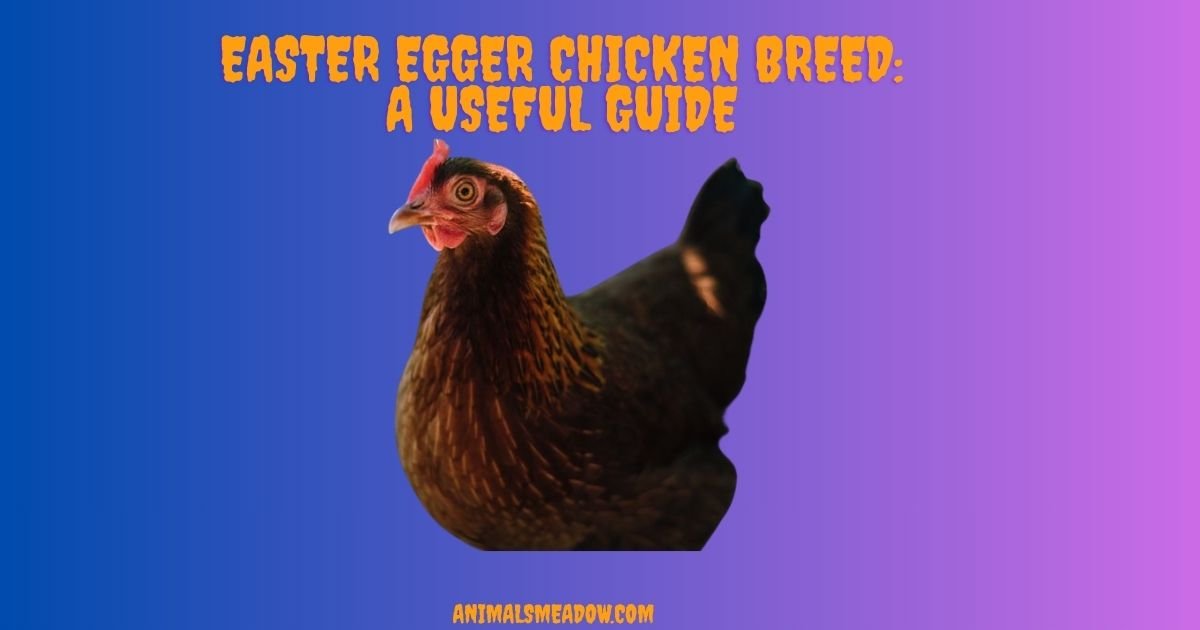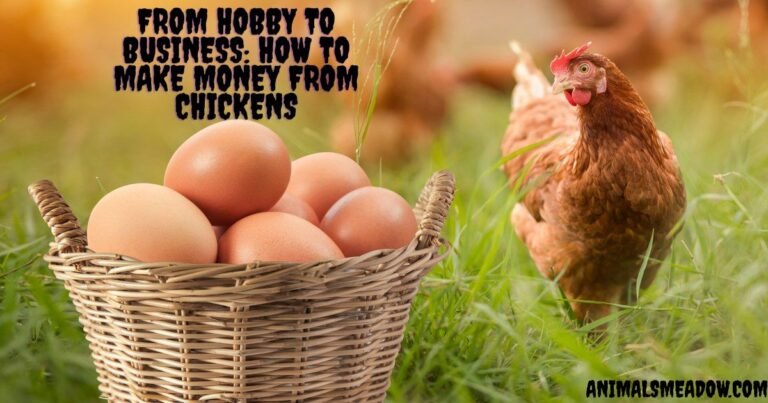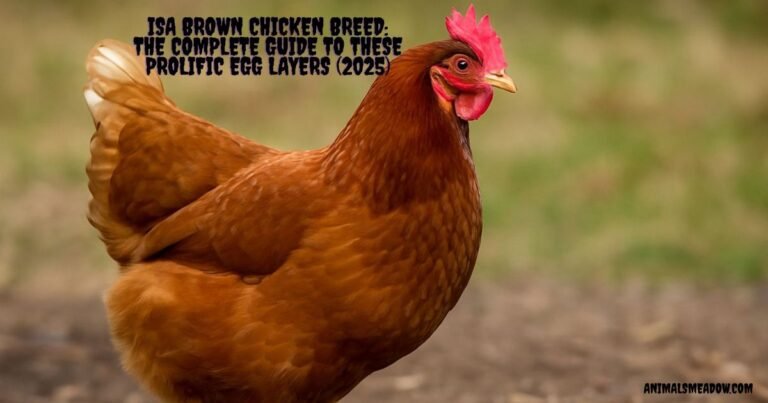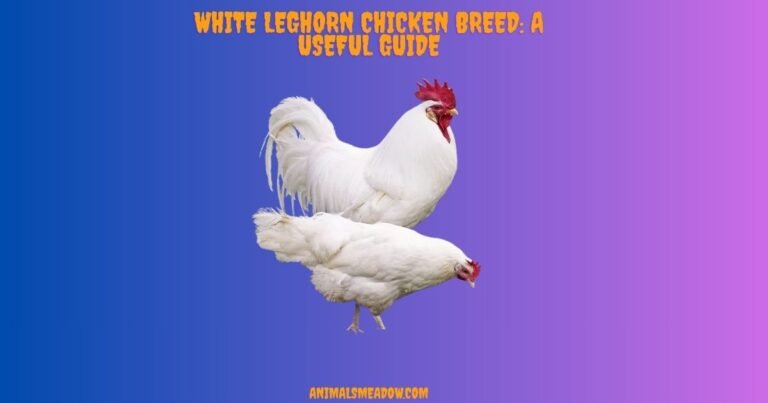Easter Egger Chicken Breed: A Useful Guide
Imagine opening your egg basket on a sunny Easter morning and discovering a treasure trove of vibrant, colorful eggs, each one a delightful surprise! Welcome to the enchanting world of the Easter Egger chicken breed, where every hen is not just a producer but an artist, crafting unique shades of blue, green, and even pink.
But there’s more to these feathered gems than their stunning shells. The Easter Egger is not only known for its eye-catching eggs but also its friendly disposition and adaptability to various living conditions.
We’ll delve deep into everything you need to know about raising these charming birds from their care requirements and temperaments to tips on breeding your own rainbow hued egg layers.
History of Easter Egger Chicken Breed
The Easter Egger chicken breed has captured the hearts of homesteaders across America since the 1970s, emerging as a favorite for those seeking the charm of colorful eggs paired with an amiable temperament.
These hybrid birds are celebrated not only for their unique ability to lay blue, green, and even pink eggs but also for their striking appearances. The genetic diversity within this breed means that no two Easter Eggers look exactly alike; variations in feather color and patterns can be delightfully unpredictable, making each bird a unique addition to any flock.
Are Easter Egger Chickens A Heritage or Hybrid Breed?
Easter Egger chickens are indeed classified as a hybrid breed rather than a heritage breed. They are typically created by crossing recognized breeds such as Ameraucanas, Araucanas, or Legbars with other chicken breeds that lay brown eggs. This hybridization results in a diverse array of physical characteristics and egg colors, which is one of the main attractions for poultry enthusiasts.
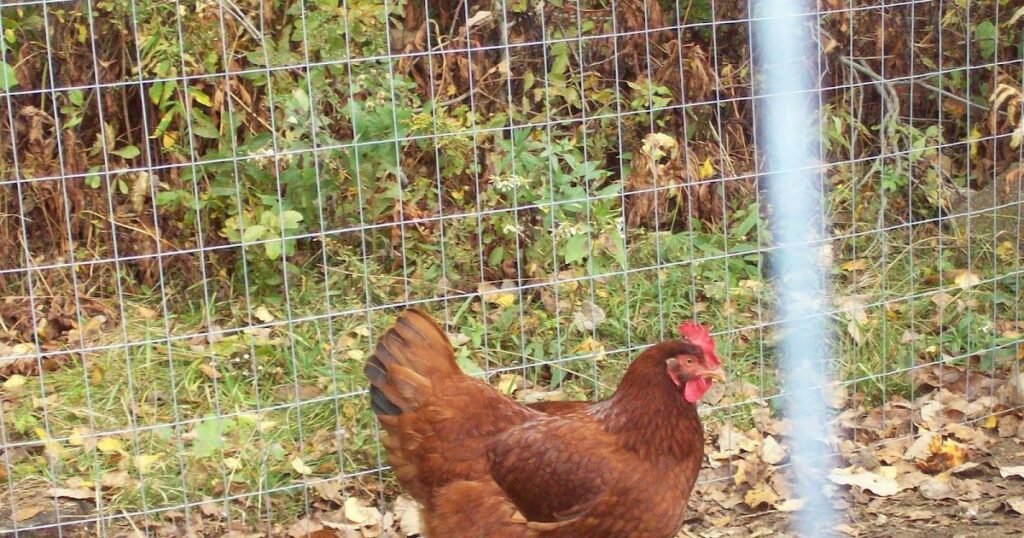
Unlike heritage breeds, which have established traits and histories passed down through generations, Easter Eggers can vary widely in appearance and temperament due to their mixed ancestry.
While they may not meet the strict criteria set by organizations like the American Poultry Association (APA) for standardization, their unique ability to produce colorful eggs has made them popular among backyard chicken keepers looking for both variety and utility in their flocks.
Easter Egger Chicken Appearance
Easter Egger chickens are a visual treat, showcasing an array of colors and features that reflect their mixed heritage. With their unique pea combs sitting snugly atop their heads, these birds exude charm with every head tilt.
The striking red or white coloring on their ears adds a delightful splash of vibrancy against the backdrop of soft feathering, while small red wattles contribute to their individual character. Their bare legs lend them a more streamlined appearance, setting them apart from more traditional breeds.
Easter Eggers are not defined by a single look; instead, they boast an eclectic blend of traits inherited from parent breeds like the Legbar. Many Easter Eggers embody that breed’s distinctive feather mohawk and vibrant plumage patterns, making each bird in your flock truly one-of-a-kind.
This variation is part of what makes raising Easter Eggers so gratifying; you never quite know what stunning combination you’ll witness as they grow and develop. The anticipation keeps chicken lovers excited and engaged at every stage along the way!
How Much Do Easter Egger Chickens Weigh?
Easter Egger chickens are indeed on the smaller side compared to many other breeds. On average, roosters typically weigh around 5 pounds, while hens usually weigh closer to 4 pounds.
This makes them lighter than the average chicken breed, which generally sees roosters weighing about 6 pounds and hens around 5.7 pounds. Their smaller size can be advantageous for backyard poultry keepers who may have limited space.
Despite their petite stature, Easter Eggers are known for their friendly personalities and unique egg colors, ranging from blue to green and even pinkish hues. Their manageable size and sociable nature make them a popular choice for both novice and experienced chicken owners alike.
So if you’re looking for a charming addition to your flock that won’t take up too much room, Easter Eggers could be an excellent option!
Average Lifespan of Easter Egger Chickens
Easter Egger chickens stand out not only for their charming appearance and colorful eggs but also for their impressive lifespan, averaging 5 to 8 years. This longevity places them above the typical chicken lifespan of 3 to 7 years, allowing owners to enjoy these delightful birds for longer periods.
Their hardiness and adaptability contribute significantly to their extended life, making them a favorite among backyard poultry enthusiasts.
The Easter Egger breed thrives in various climates and environments, which is crucial in maximizing their life expectancy. Proper nutrition combined with regular health checks will further enhance their vitality.
Engaging with these inquisitive creatures can improve mental stimulation for both the birds and their caretakers creating a bond that promotes well being on both sides. So as you consider bringing home an Easter Egger, remember that you’re investing not just in colorful eggs but also in a loyal companion that could grace your homestead for many years to come.
Easter Egger Egg Color
Easter Eggers are a delightful breed that offers more than just their charming personalities; they bring an array of vibrant egg colors that can transform any farm or backyard into a colorful oasis. These unique hens, not to be confused with purebred Araucanas or Ameraucanas, derive their stunning blue, green, and even pink eggs from the intricate interplay of genetics.
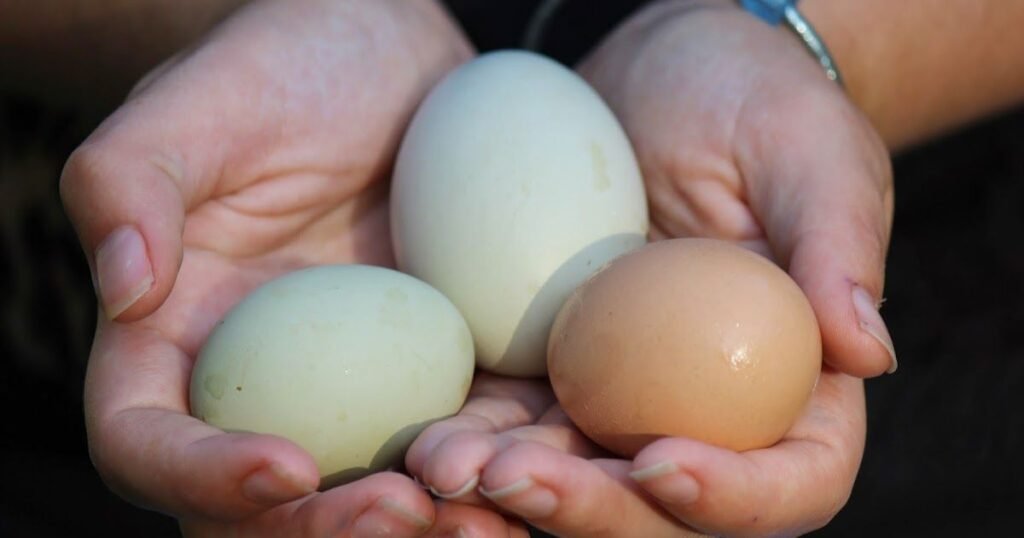
Each chicken lays eggs that reflect its individual genetic makeup, resulting in shades that range from soft pastels to deeper hues. As we observe our flock, it’s fascinating to note how specific each bird’s color is. what might appear as a muted teal on one day could shift to a more vivid turquoise as the seasons change.
The excitement doesn’t end with production; it extends broadly into exploring how these colors can vary even within the same flock. For instance, two hens from similar genetic backgrounds may lay distinctly different shades of blue-green eggs, sparking conversations about lineage and breeding choices among chicken enthusiasts.
Beyond aesthetics, these colorful eggs carry with them a story a representation of not just poultry farming but also nature’s artistry at play. The next time you encounter an Easter Egger egg basket brimming with various hues, take a moment to appreciate the kaleidoscope of genetics behind each creation, each egg telling its story long before making its way to your kitchen table.
How Many Eggs Do Easter Egger Chickens Lay?
Easter Egger chickens typically start laying eggs between 20 to 25 weeks of age. Once they reach maturity, you can expect them to produce around 200 eggs per year, provided they receive a proper diet and care.
These birds are known for their hardiness and adaptability, making them a popular choice among backyard chicken enthusiasts.
It’s important to note that as Easter Eggers age, their egg production will gradually decline. On average, you can anticipate a decrease of about 10 to 15 eggs per year after the first few productive years. Eventually, like all hens, they will stop laying altogether.
With proper management and care throughout their lifespan, Easter Eggers can be both delightful pets and reliable layers during their prime years.
Breeding Easter Egger Chickens
Easter Egger chickens are a delightful addition to any backyard flock, not only for their colorful eggs but also for their natural breeding capabilities. These birds can breed prolifically without the need for human intervention, making them an excellent choice for sustainable poultry enthusiasts.
While they don’t exhibit broody behavior like some heritage breeds often opting to roam rather than sit on their nests, their robust fertility ensures that hatching new chicks can be a straightforward affair.
For those seeking purebred Easter Eggers, it’s essential to breed a purebred rooster with a hen of the same lineage. This careful selection process means you’ll enjoy offspring that mirror the unique traits of these marvelous chickens.
The added bonus? Each generation continues to surprise you with vibrant egg colors from pale blue and green to soft pinks creating a visually stunning experience each time you collect from the coop.
Embracing this natural breeding approach allows flock owners not just to enjoy genetic diversity but also guarantees that joyous sense of discovery embodied in every colorful egg laid by their happy Easter Eggers!
Are Easter Egger Hens Broody?
Easter Egger hens are generally known for their friendly temperament and colorful eggs, but when it comes to broodiness, they tend to be less inclined compared to other breeds. Breeders have intentionally selected for traits that prioritize egg production and temperament, often leading to a reduced likelihood of these hens going broody.
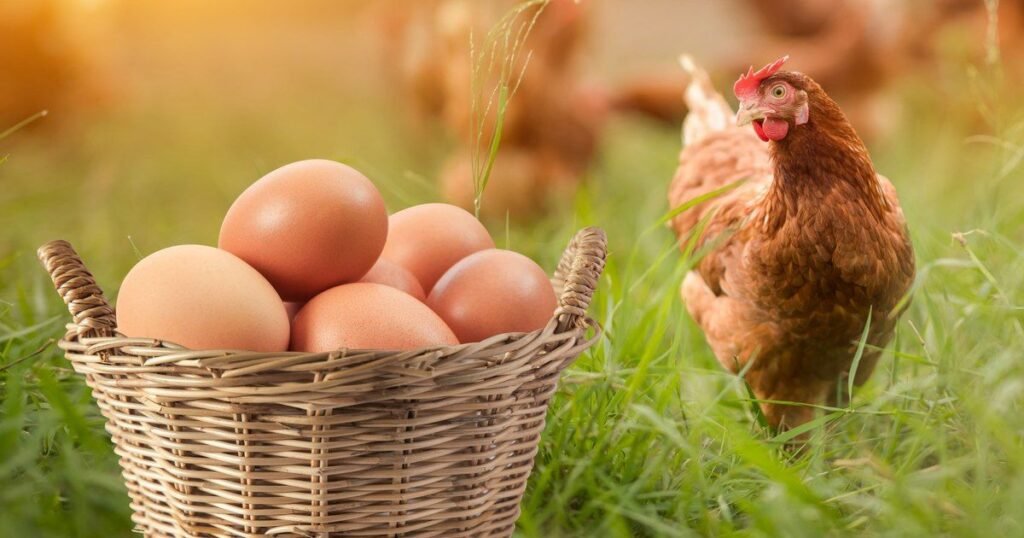
This means that if you’re looking for a reliable layer without the hassle of managing a broody hen, Easter Eggers could be an excellent choice.
While individual behavior can vary, many owners report similar experiences with their Easter Eggers remaining non-broody over extended periods. Your experience with five hens not going broody in over three years aligns well with this breed’s characteristics.
If you’re seeking a flock that consistently lays eggs without the interruption of broodiness, Easter Eggers are likely to meet your expectations.
Are Easter Egger Chickens Hardy?
Easter Egger chickens are generally considered a hardy breed, well-suited to a range of climates. They are known for their adaptability and can thrive in both cold and warm temperatures.
While they can endure colder weather, it’s essential to provide them with adequate shelter and protection from harsh conditions. In extreme cold, such as -22°F with wind-chill, ensuring they have access to a warm brooder or heater will help keep them comfortable and safe.
In hot weather, Easter Eggers also need special attention. Providing shade is crucial to prevent overheating during sunny days. You can create shaded areas using tarps or trees in their run, and ensure they have plenty of fresh water available at all times.
Monitoring their behavior for signs of heat stress will help you take proactive measures to keep them cool. Overall, with the right accommodations for both extremes of temperature, Easter Egger chickens can be healthy and productive members of your flock throughout the year.
Common Easter Egger chicken breed Health Risks
Easter Eggers, known for their colorful eggs and friendly demeanor, are remarkably hardy birds that often evade serious illnesses. Vigilance is essential to ensure their optimal health. While they typically show robust health, younger birds integrating into an established flock may experience stress that weakens their immune systems.
To bolster their well being during this critical transition, adding vitamins to their drinking water can make a substantial difference, boosting not only immunity but also overall vitality.
Another aspect of Easter Egger care involves ensuring they receive adequate calcium in their diet. This nutrient deficiency can lead to brittle eggshells, a common issue among these chickens potentially causing complications such as broken eggs or even egg binding.
Incorporating oyster shells as a natural grit source is an effective way to fortify calcium levels while supporting digestion. By addressing these dietary needs proactively, owners can help extend the lifespan of their Easter Eggers and optimize both egg production and bird well-being in the long run.
Are Easter Egger chicken breed Good For Meat Production?
Easter Egger chickens are primarily known for their colorful eggs rather than their meat production. While they are indeed smaller birds, which limits their overall meat yield compared to larger breeds like Broilers or Cornish Crosses, they can still provide a decent amount of flavorful meat for small-scale farming or personal consumption.
Their meat is often described as tender and tasty, with some enthusiasts noting that it has a flavor profile reminiscent of quail, making it an interesting option for those looking to diversify their poultry options.
If you’re considering raising Easter Eggers for both eggs and meat, it’s important to manage your expectations regarding the quantity of meat produced. They are best suited for backyard flocks where egg production is the primary goal, but if you enjoy the unique taste of their meat and appreciate a multi-purpose bird, they can certainly fit into your homesteading plans.
While Easter Eggers may not be ideal for large-scale meat production, they can still contribute to a sustainable and varied diet in smaller settings.
Are Easter Egger chicken breed Noisy?
Easter Egger chickens are generally considered to be a quieter breed compared to many others, making them well-suited for urban farms or areas with close neighbors. While they may occasionally vocalize especially when foraging or expressing excitement they are not known for excessive noise.
This characteristic is appealing to those who want to keep chickens without disturbing the peace in densely populated environments.
It’s worth noting that all chickens will have their moments of chatter, particularly during the day when they’re active and socializing. Easter Eggers typically maintain a more subdued demeanor, which can make them an ideal choice for backyard flocks where noise levels need to be kept in check.
Overall, if you’re looking for a friendly and relatively quiet chicken breed, Easter Eggers could be a great addition to your home!
Easter Egger chicken breed Temperament
The Easter Egger breed is renowned for its tranquil temperament, making these chickens perfect companions for families and children. Their friendly nature allows them to thrive in a communal environment, often becoming the cherished pets of both seasoned chicken keepers and newcomers alike.
Observing an Easter Egger as it gently approaches you, curious yet calm, instantly showcases how their placid demeanor can transform regular backyard spaces into vibrant hubs of life.
Stability in personality not only makes them delightful to handle but also fosters a sense of safety around younger farmhands. Because they are less likely to peck or squawk aggressively compared to more assertive breeds, parents can confidently introduce their little ones to the joys of chicken care without worrying about potential mishaps.
In charmingly chaotic moments like feeding time or during free range play the gentle disposition of Easter Eggers shines through, often leading to amusing antics that bring smiles all around.
Beyond their amiable personalities, Easter Eggers are known for being curious and intelligent creatures. This curiosity encourages interaction both with humans and other animals on the farm, helping establish bonds that deepen over time.
Whether they’re darting about pecking at treats or huddling together during evening roosts, these birds exemplify a harmonious blend of playfulness and gentleness, a true testament to what makes them beloved additions not just as poultry but as integral members of family life on the homestead.
Easter Egger chicken breed Housing Requirements
When it comes to housing Easter Egger chickens, creating a cozy sanctuary that accommodates their unique needs is essential. Given their small size, each bird requires a cozy space of 3 to 4 square feet inside the coop.
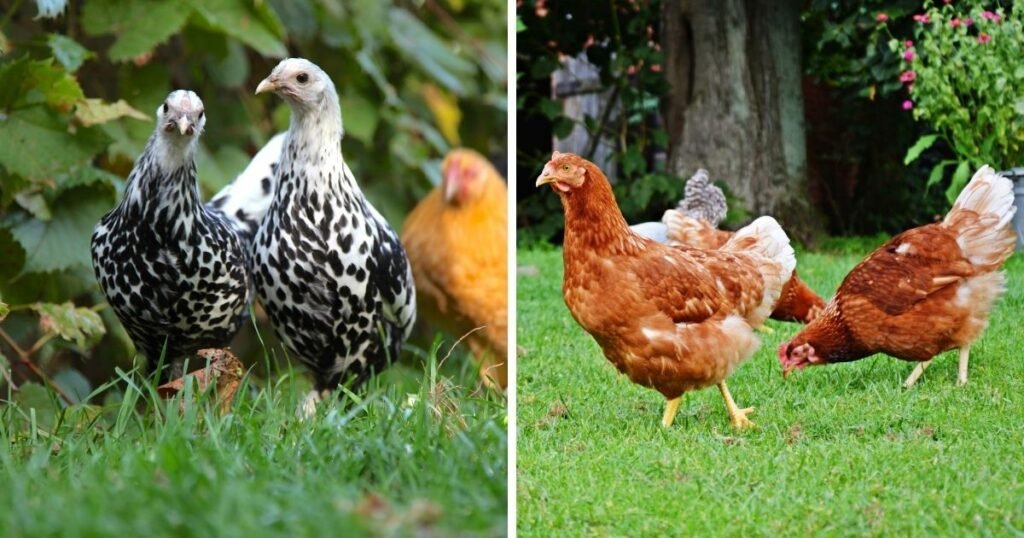
It’s vital that this shelter remains free from drafts; while our coop isn’t heated, we’ve found this approach works beautifully for our girls even on chilly nights. The design ensures they feel secure and comfortable, promoting both health and happiness.
In terms of outdoor living, an enclosed run of at least 10 square feet per bird provides the Easter Eggers with ample room to roam and forage. This space becomes particularly important during hot summer days when temperatures soar beyond 90 degrees.
With plenty of room, these cheerful birds can escape the heat by finding shaded spots or enjoying dust baths both crucial for their well-being. By cultivating a thoughtful environment that strikes the right balance between spaciousness and security, you help ensure your Easter Eggers live vibrant lives filled with activity and comfort.
Are Easter Egger chicken breed Right For You?
Easter Egger chickens can be an excellent choice for beginners and backyard poultry enthusiasts. Known for their friendly and gentle temperament, they are generally easy to handle, making them great companions for families or individuals new to chicken-keeping.
Their resilience to various diseases and harsh weather conditions means that they require less intensive care compared to some other breeds, allowing you to enjoy the experience without feeling overwhelmed.
While Easter Eggers may not produce as many eggs as some prolific layers like Leghorns or Rhode Island Reds, they still offer a steady supply of beautiful, colorful eggs that can range from blue to green and even pinkish hues.
This unique trait adds a delightful visual element to your egg basket and can be a fun talking point with friends and family. If you’re primarily interested in companionship and aesthetics rather than meat production or maximum egg output, Easter Eggers could be the perfect addition to your flock.
Conclusion
The Easter Egger chicken breed offers a delightful combination of colorful eggs and engaging personalities, making them a fantastic addition to any backyard flock.
Their hardiness and adaptability ensure they thrive in various climates, while their friendly demeanor makes them suitable for families and novice poultry keepers alike.
Whether you’re drawn in by their vibrant plumage or the thrill of collecting pastel-colored eggs, these chickens can bring joy to your homestead. So why not consider adding some Easter Eggers to your flock today?
FAQs
What breed is Easter Egger chicken?
Easter Egger chickens are not a specific breed but rather a hybrid variety known for their unique and colorful egg production.
How many years do Easter Eggers lay eggs?
Easter Eggers, like many other hybrid chicken breeds, typically start laying eggs around 5 to 6 months of age. Once they begin, they can lay consistently for about 3 to 5 years.
What is the real name of an Easter Egger chicken?
The term Easter Egger is not a formal breed name but rather a colloquial term used to describe chickens that lay eggs in various shades of blue, green, or even pink.
Are Easter Eggers friendly?
Easter Eggers are generally known for their friendly and sociable nature. These chickens tend to have a laid-back temperament, making them great companions in a backyard flock.

